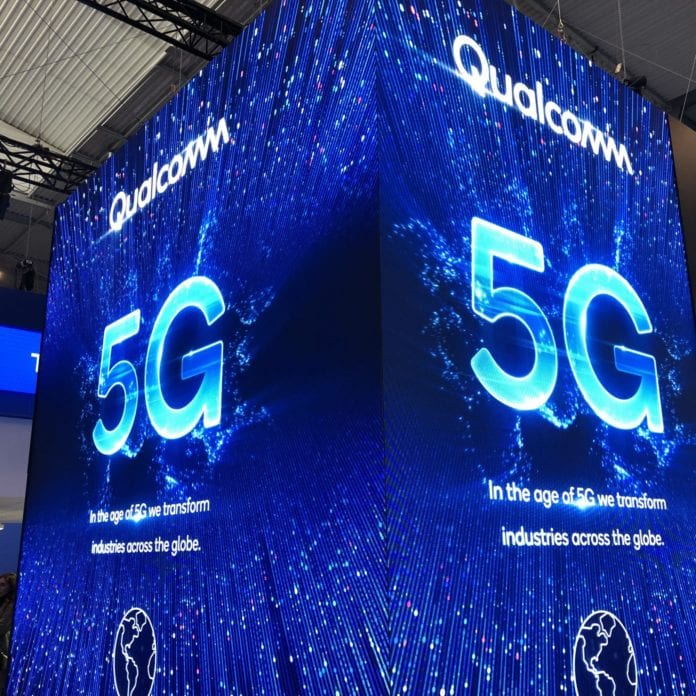4G to remain a focus area for regions like India
Qualcomm’s three new mobile platforms, the Qualcomm Snapdragon 720G, 662 and 460, will, according to the company, enable enhanced user experiences, support Dual-Frequency (L1 and L5) GNSS to improve location positioning accuracy and robustness, and are the first system-on-chip solutions to support Navigation with Indian Constellation (NavIC), an autonomous regional satellite navigation system that provides real-time positioning and timing services in India, as well as an extended region beyond.
This is the first time the Qualcomm Location Suite is supports up to seven satellite constellations concurrently, including the use of all of NavIC’s operating satellites for more accurate location performance, faster time-to-first-fix (TTFF) position acquisition and improved robustness of location-based services.
According to Dr. K Sivan, chairman ISRO, the availability of NavIC across multiple Snapdragon mobile platforms will improve the geolocation capabilities of smartphones.
“I thank Qualcomm Technologies for this support and urge OEMs to leverage it for handset launches in India,” he said.
In addition, Qualcomm said in a press release that the new mobile platforms enable fast 4G connectivity speeds, deliver key Wi-Fi 6 features and integrated Bluetooth 5.1 with advanced audio via FastConnect 6-series subsystems. The new platforms also feature the Qualcomm AI Engine and Qualcomm Sensing Hub for use in “virtually always-on scenarios.”
The focus on 4G is particularly important in India, where the fourth generation of cellular technology has, according to Rajen Vagadia, vice president and president, Qualcomm India provided a “phenomenal boost […] towards enabling broadband connectivity for Indian consumers.”
Even as Vagadia acknowledge the 5G’s growing adoption around the world, he stated, “4G will continue to remain a focus area for Qualcomm Technologies for regions like India, where it would stay as a key technology for connectivity.” said Rajen Vagadia. “Our goal is to enable our partners to continue creating solutions that offer seamless connectivity access and exceptional mobile experiences, that consumers can count on.”
“Demand for high-performance chipsets that support intensive usage and gaming is continuously increasing,” said Manu Jain, global vice president, Xiaomi and managing director, Xiaomi India. “Moreover, consumers are increasingly demanding seamless connectivity solutions. We have worked closely with Qualcomm Technologies to ensure that Snapdragon 720G Mobile platform enables our customers to unlock this potential and experience high-performance seamlessly at faster speeds.”
Realme India, who was the first to launch a smartphone based on the Snapdragon 665 in India, intends to launch a smartphone in 2020 with the Snapdragon 720G Mobile Platform.
The chipsets
Snapdragon 720G delivers smoother, more immersive game play, as well as improved video streaming with the Qualcomm Spectra 350L ISP. The integrated Snapdragon X15 LTE modem supports 3-carrier aggregation, 4×4 MIMO on two carriers and 256-QAM modulation for fast download speeds up to 800 Mbps. In addition, according to the company, Snapdragon 720G, with FastConnect 6200 subsystem, virtually doubles Wi-Fi speed and range, compared to single antenna devices while also delivering key Wi-Fi 6 features such as 8×8 sounding with multi-user MIMO for up to 2x improvement over competitive Wi-Fi 6 devices, Target Wake Time for up to 67% better power efficiency and the complete WPA3 security suite.
Some features of the Snapdragon 662 includes the new Qualcomm Spectra 340T, which supports new triple camera configurations and smooth switching between them and the addition of the 3rdgeneration Qualcomm AI Engine with Hexagon Vector Extensions and the Qualcomm Spectra 340T will also enable AI-based user experiences such as avatars, night photography, and face and voice authentication. In addition, the 662 chipset has the new Snapdragon X11 LTE modem with peak download speeds up to 390 Mbps thanks to 2-carrier aggregation, 2×2 MIMO and 256-QAM modulation, along with 150 Mbps peak uploads.
Snapdragon 460 features performance CPU cores and an updated GPU architecture that translates into up to 70% and 60% increase in performance, respectively, as well as the Qualcomm Spectra 340 ISP, which enables the platform to capture high-quality photographs and support for triple cameras. An integrated Snapdragon X11 LTE modem allows for download speeds up to 390 Mbps and uploads up to 150 Mbps.
Devices based on Snapdragon 720G are expected to be commercially available in Q1 2020 and devices based on Snapdragon 662 and 460 are expected to be commercially available by the end of 2020.

